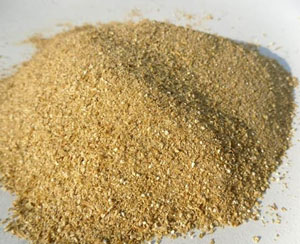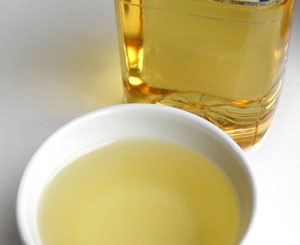Rice Bran Oil
Rice bran oil is the oil extracted from the germ and inner husk of rice. It is well-known for its very high smoke point of 490℉(254℃) and its mild flavor, making it suitable for high-temperature methods. But its most notable feature is its high level of components with nutraceutical values and oxidative stability. It is popular be used in several Asian countries, including Japan and China.
Application
Frying
Pure rice bran oil, exhibits excellent frying performance and contributes a pleasant flavor to the fried food. It possesses good storage stability and fry life without hydrogenation. These properties make it a premium choice for frying upscale products with delicate flavors. Most Japanese restaurants in the USA have now switched to rice bran oil for their tempura frying oil because of its superior performance in this special application. General frying applications, ranging from French fries to chicken, rice bran oil exhibits excellent taste and texture. Since hydrogenation isn't required for stability, it is a natural high-quality liquid frying oil that is also free of trans-fatty acids.
Stir-Frying
Rice bran oil is also a great choice for use in stir-frying. While its delicate, nut-like character complements the natural flavor of stir-fried meats, seafoods and vegetables, it never overpowers them. A further advantage is its natural resistance to smoking at high frying temperatures. Not surprisingly, rice bran oil has quickly become the oil of choice by many high-end Asian-American restaurants.


Margarine
In addition to its pleasant flavor, several factors make rice bran oil a good choice for use in margarine. Its natural tendency to form a stable ß' crystal lattice combined with an intermediate palmitic acid content result in a good balance of plasticity, creaminess, and spreading properties. A wide range of margarine types is possible by blending with other oils and through interesterification.
Salad Dressing
Rice bran oil has a light, barely perceptible flavor, making it wonderful to use with gourmet vinegars and spices. The oil emulsifies easily, so dressings don't separate.
Baking
Because of rice oil's light flavor, it has found favor in baking applications. Brownies and other baked goods made with rice oil turn out light and delicious. Baking sheets and cake pans coated with rice oil allow the baked goods to come out of the pan or off the cookie sheet with no trouble at all.
Snacks
When processed to retain high levels of tocols, rice bran oil may be used as a natural antioxidant source for topically coating a wide range of products such as crackers, nuts, and similar snacks to extend shelf life. This use is further enhanced by the highly desirable flavor of rice bran oil. Alternatively, as described in a patented process (Taylor et al., 1996), this specially processed rice bran oil may be blended with less-stable oils (such as soy with a high linolenic acid content) to improve their stability in food systems.
Soap Manufacturing
Rice Bran Oil has a long and successful history in Japan as a base for soaps and skin creams. The oil is purported to reverse the effect of aging by slowing the formation of facial wrinkles thanks to rice bran oil's rich concentration of Vitamin E and gamma-oryzanol. In Japan, women who use rice bran oil on their skin are known as 'rice bran beauties'. In the US, rice oil has gained a strong and loyal following with soap manufacturers and artisans.Supplement for Horses, Dogs and other animals
Rice bran oil has found favor with performance horses or older horses that have a difficult time keeping weight on. The rice oil is purported to give horse and dog coats a rich, shiny look. Some zoos are even feeding rice oil as a supplement to their tigers and lions!
Nutraceutical
Among the many sterols present in the unsaponifiable fraction of rice bran oil, oryzanols and tocotrienols are two distinctly different component groups that have been intensively studied for their health benefits (Rogers et al., 1993; Rong et al., 1997).
Oryzanol
Crude rice bran oil contains about 1.5% or more gamma-oryzanol, a group of ferulate esters of triterpene alcohols and phytosterols. The high antioxidant property of gamma-oryzanol has been widely recognized. Studies have shown several physiological effects related to gamma-oryzanol and related rice bran oil components. These include its ability to reduce plasma cholesterol (Lichenstein et al., 1994), reduce cholesterol absorption and decrease early atherosclerosis (Rong et al., 1997), inhibit platelet aggregation (Seetharamaiah et al., 1990), and increase fecal bile acid excretion (Seetharamaiah and Chandrasekhara, 1990). Oryzanol has also been used to treat nerve imbalance and disorders of menopause (Nakayama et al., 1987).
TocotrienolsRice bran oil is the only readily available oil, other than palm, that contains significant levels (approximately 500 ppm) of tocotrienols (Eitenmiller, 1997). These occur in at least four known forms and are similar to the tocopherols in chemical structure. They belong to the vitamin E family and are powerful natural antioxidants (Tomeo et al., 1995). The protective benefits of dietary antioxidants in the prevention of cardiovascular disease and some forms of cancer have been widely publicized (Eitenmiller, 1997; Nesaretnam et al., 1998).


